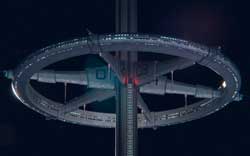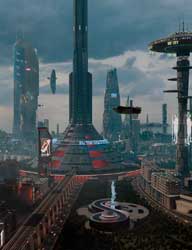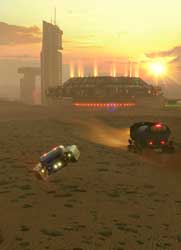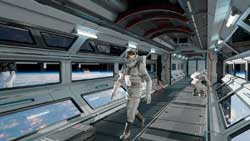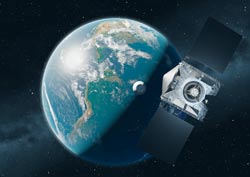This animation shows the base station of one such elevator. The vertical 'sky trains' each have
twenty individual 'carriages' which in turn each have three levels. Moving at 150 km per hour they
could reach the ring in as little as two hours.
Details
Title: O'Neill Colony Comp YT
Category: Hardware, Animations
Date: Nov 2023
Medium: Blender, Photoshop
Keywords:
More Hardware
